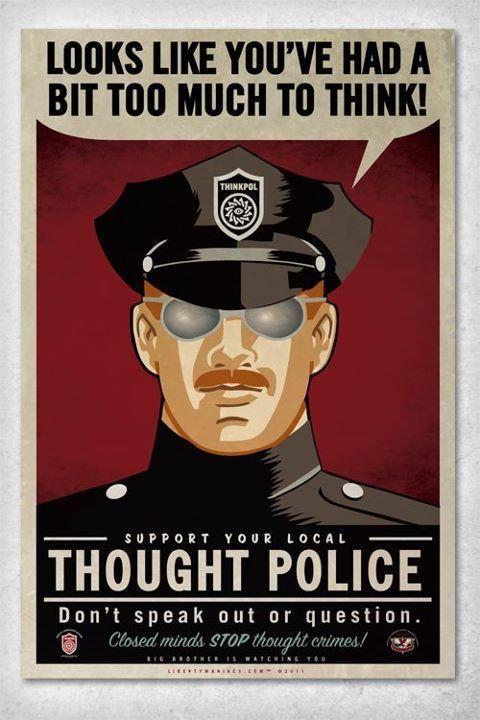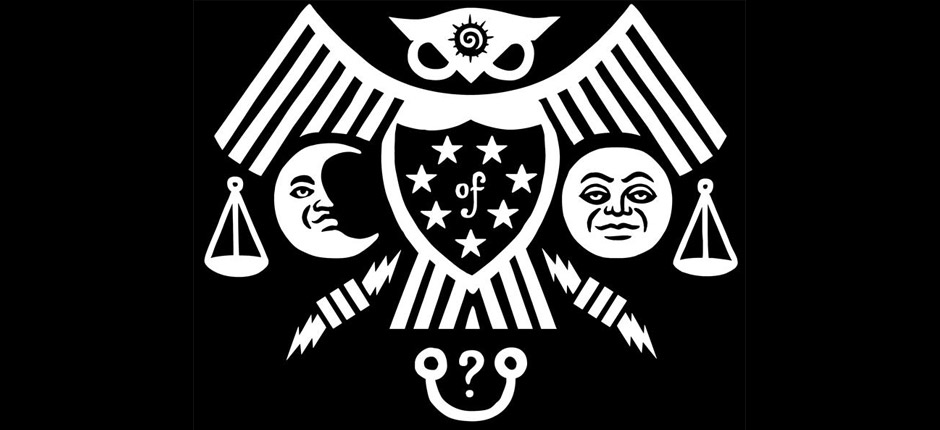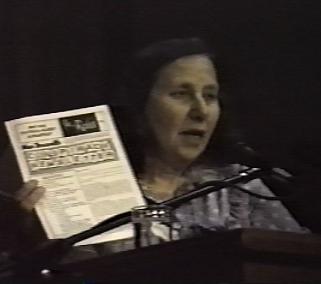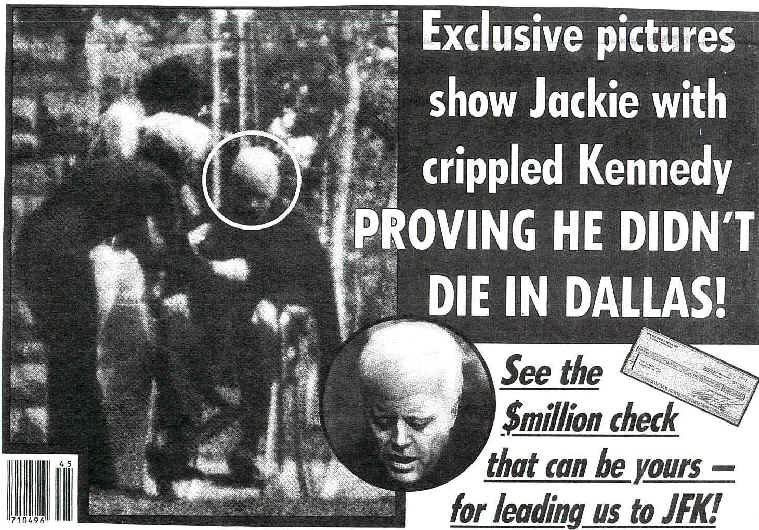A Conspiracy Theory
Jesse Walker
(Harper)

These words litter the inner and outer covers of The United States of Paranoia and for some of us will bring along a host of memories if not alarms, prejudices, fears and fancies. Jesse Walker's twelve chapters (plus Epilogue) cram together so many conspiracies that one begins to think of the all of American history as but a mountain of paranoia, starting with the earliest settlers who were convinced that the American Indians were plotting against them (the Indians had the same fears about these invaders of their own homeland security).
I started off my notes by trying to list serially the number of conspiracies that Walker was able to come up with during his (evidently) enormous research for this volume but I ultimately had to give up. For what we have here are not only conspiracies, but interlocking conspiracies, conspiracies that dovetail (well or badly) with others, conspiracies that conjoin then fall apart, and --- in some cases --- appear (or disappear) while one is trying to unveil yet another plot.
Take the chapter "The Water's Gate." It lumps together in one place those intrigues that turned out to be the real meal. COINTELPRO, for instance, was hatched in 1956 by Edgar Hoover's FBI:
- They tried to get targets fired from their jobs, and they tried to break up the targets' marriages. They published deliberately inflammatory literature in the name of the organizations they wanted to discredit, and they drove wedges between groups that might otherwise be allied.
They investigated artists for example, for very odd reasons; there was a request to dig up dirt on the Monkees, because the Los Angeles field office of the FBI claimed that one of their concerts had included left-wing "subliminal messages."
The most pernicious part of COINTELPRO was what Walker sees as "the hall of mirrors:"
- the feds didn't just infiltrate and disrupt dissident groups; they made sure the groups knew that they were being infiltrated and disrupted, so activists would suspect one another of being police agents.

After a couple of years of this, one night in mid-1972, five or so huge I mean HUGE guys broke down the front door, commandeered the building, then crammed themselves in the control room along with a couple of shotguns and told the on-the-air people that if they opened the microphone they would get blown away. We had no idea who these guys were. Mafioso? Dealers? A self-appointed ghetto protection mob? Little did we suspect...
After a diligent search, they found some pot (pot being the essential ingredient of the mix in those days of those of us who were hell-bent on fighting "the system," whatever that was). Then they herded us downstairs and into what were then called "Black Marias" --- and hauled us off to the pokey. (This might have been the only time in the history of American broadcasting that a radio station went dark so that the entire management, on-the-air, and volunteer staff could be booked into the hoosegow by the constabulary.)
One of the youngest volunteers, Tom Connors, later reported that as he was being fingerprinted, he was asked if his mother knew where he was at the moment. He yelled across the room, "Mom, do you know where I am right now?" "Yes, I do," she replied: she was another of the volunteers at KDNA.
For a time we were puzzled as to why the officers of the law would come up with such a show of force for what was, after all, a rather colorful but somewhat minor broadcast operation. It was years later that, using the Freedom of Information Act, we found that COINTELPRO had been the sponsoring agency of the whole kit-and-kaboodle.
We should have known better than to be surprised. KPFA --- the granddaddy of these troublemaking stations --- not only got investigated by House Un-American Activities Committee, which was trying enough, but worse --- got audited by the IRS every year for a dozen or so years.
Another station I was involved with, KRAB in Seattle, was visited by the FBI in December of 1968. The feds told us to hand over a tape of a speech by James Bevel which we had recently broadcast. Bevel was a black preacher from Chicago who had been working with Martin Luther King.
Because of certain things said during his talk, not only did they seize his tape, the station's license was not automatically granted renewal as all other broadcasters were ... but set for hearing. KRAB (and Rev. Bevel) were accused of obscenity, which included his using such colorful phrases as "I ain't here to hear you pimp your mamma" and "don't let them freak you out." Well, we didn't and they did, but the federal hearing examiner --- dismissing the FCC's case four years later --- confessed that he found the language to be neither obscene nor conducive to public uprising. Just indecipherable.

Perhaps we should lay some of the blame for the confusion on the ample shoulders of one Mae Brussel. A friend of hers --- not alien to a few conspiracy theories himself --- was Paul Krassner. He wrote that Brussell was "plump and energetic, wearing a long peasant dress patchworked with philosophical tidbits, knitting sweaters for her children while she breathlessly described the architecture of an invisible government." The assassination of John Kennedy got enmeshed in a "counterhistory of the postwar United States," which involved surviving Nazis, the Symbionese Liberation Army and an entire sprawling mix of those who had ordered the murders of "the Kennedys, Malcolm X, Martin Luther King, Jimmy Hoffa, John Lennon, and even Chico and the Man star Freddie Prinze, among others."
Mae Brussel operated out of her house in Santa Cruz with a small clan of operatives --- called, according to Walker, the Brussel Sprouts --- and once again our paths crossed those of this latter-day Queen of Machinations for she often appeared on another of the radio stations I had helped to set up, KUSP in Santa Cruz.
Her programs often left us dazed if not dozing, but they were compelling enough to capture Krassner even as she was conjoining Jonestown to the shootings of George Moscone and Harvey Milk, blending all three with "the Manson murders, the Zodiac killer, and all the sixties assassinations" as well.
Walker writes, tellingly,
- As history, it was a jerry-rigged assemblage of facts, half facts, rumors, and guesses. But as a mythic translation of a jarring historical moment, it had a powerful pull. Brussell transformed a collection of free-floating anxieties into an external enemy with a name. She gave her listeners a way to talk about the meltdown in progress.
Krassner found himself slowly sinking into the Mae Brussell mindset. For instance, he began to compose a completely fabricated article that linked Sirhan Sirhan (the assassin of Robert Kennedy) with Scientology. It turned out to be true, at least partially. He subsequently wrote, "Reality will transcend allegory every time."
His own conspiracy world came together when he "had to face the reality of my own peculiar darkness. Originally, I had wanted to expose the dangers of Scientology, but instead I joined a cult of conspiracy."
- I thought that what I published was so important that I wanted to be persecuted, in order to validate the work. In the process, I had become attached to conspiracy.

- In effect, COINTELPRO functioned as a conspiracy to defeat subversive conspiracies by convincing the alleged subversives that they were being conspired against.
We may find ourselves bogged down by in world of the Rosicrucians, Freemasonry, Lee Harvey Oswald, Waco and the Branch Davidians for all great conspiracies must involve copious amounts of stickum to enmesh as many unlikely elements as possible. However, Walker is good at what Wikipedia likes to call "disambiguation." In the process, leads us through countless fascinating subplots to not a few droll surprises.
He convinces us that a fairly compact history of this subterfuge appears in the movies of the era, the "conspiracy genre of the '70s." This includes Klute, All the President's Men, Three Days of the Condor, Winter Kills, Foul Play, and Executive Action. The "suspicious spirit," Walker suggests, was exemplified by Scorpio (1973) which "opens with the CIA killing an American ally and framing the local opposition for the deed." The assassin explains,
- It's not his death that's important. It's who appeared to have killed him that counts.
Of all these films, The Parallax View, he claims, takes the cake, what one critic called "the greatest of all assassination films."
- If you won't go that far it's still hard not to think of it as the model assassination film, the first picture that comes to a movie buff's mind when the phrase '1970s conspiracy thriller' is spoken aloud.'
Obviously he's a man who knows and loves to know his movies (and loves to report our inaccurate memories of them). Walker offers a surprising footnote about the earliest Rambo films. It was drawn from the novel First Blood, and was "one of the first manifestations of what would become a media stereotype: the deeply damaged Vietnam veteran who has trouble adjusting to the home front and finally snaps."
- In real life, Americans who survived that war have been more likely to be married, college-educated, and gainfully employed than other members of their generation.
But, he suggests, the movie was "explicitly antiwar and surprisingly radical."
The United States of Paranoia is one of those books that I enjoyed enough to just keep on going after the last page. At the very end are "Acknowledgments" which reveal that "It took a vast conspiracy to write this book." I believe. Going on through the 78 pages of notes, we run across a few more gems. Being a radio nut, I found that my media-studies hero Marshall McLuhan had somehow gotten caught up in the same game, and that he "had his own history of conspiracy theorizing. For a period of his life he convinced himself that the Freemasons were to blame for the American Civil War, for Vatican II, and for several setbacks in the career of Professor Marshall McLuhan."